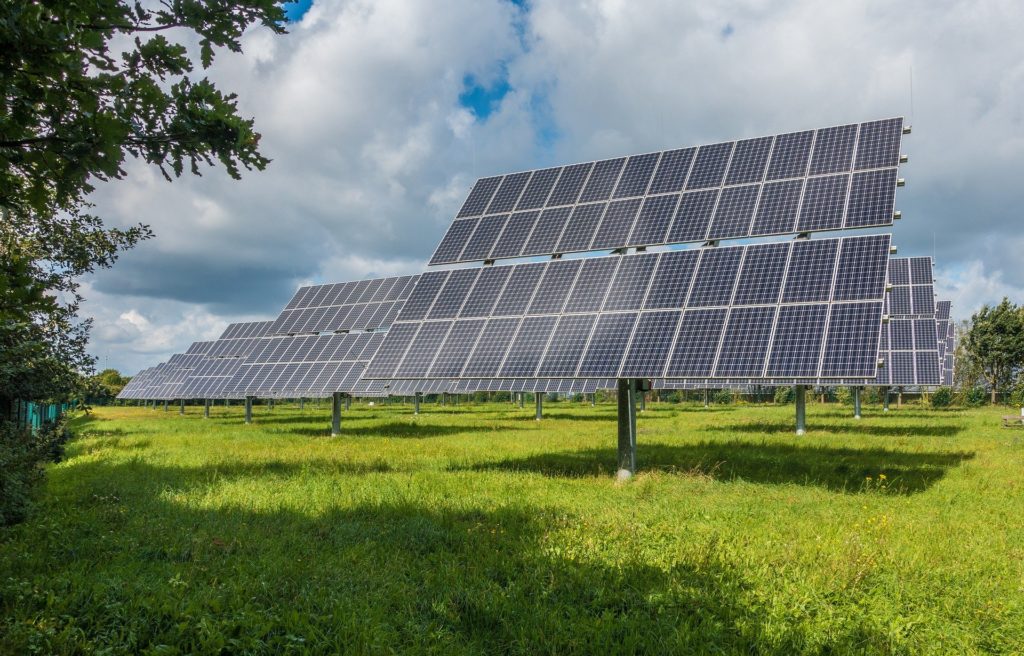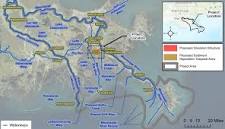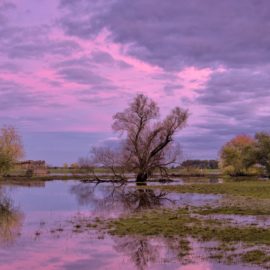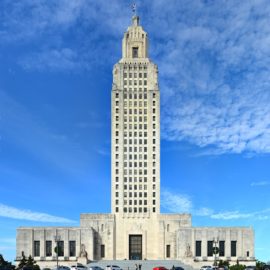
A recent post was about solar and farmers over the state. There are numerous plans for solar farms in many areas of the state. Recently a flare up happened in Tangipahoa Parish between a farmer and solar. The decision from the parish is coming soon and it may be decided not on commerce of environmental concepts but on esthetics.
Ira Cleveland is anxious about a project looming over the lush, green fields near his farmhouse on the eastern edge of Tangipahoa Parish. “I don’t want to say the sky is falling,” he said, “but it’s bad.” The project Cleveland worries about would cover acres of gently-rolling land about a third of a mile from his home with thousands of solar panels — yet another proposed development in Southeast Louisiana’s march towards becoming a hotspot for solar power. Cleveland’s fears are manifold. He worries that solar panels might leave the ground uncultivable once developers have come and gone. In the shorter term, the thought that they could poison wells from which residents draw their water fills him with unease. He’s fearful, too, that a blaze could break out among the panels, and that local firefighters will be unable to reach it. What frustrates him most, though, is the thought of the stunning agricultural vista off La. 445, where Cleveland grew up, being marred by acre upon acre of solar panels. “I’m 74 years old, was born and raised out here, and never thought I’d see the day that they’d give up this farm land for solar plants,” Cleveland said.
Theadvocate.com
Are we a gas and oil state and is agriculture king? It is a state problem as we shift from oil and gas to renewables.
His apprehensions mirror those voiced in recent weeks by many residents across rural southeast Louisiana. As a renewables boom drives debate among state lawmakers over the future of the region’s identity as an oil-and-gas hub, residents and officials are grappling with how to regulate solar developments at the local level. Farmers around the state express fear that utility-scale solar projects could rob them of tillable land and create eyesores, while renewable-energy companies try to reassure residents that the panels are clean and safe. Landowners, meanwhile, say they should be allowed to lease their land to developers they choose. Tangipahoa is the latest locality to confront those concerns. With new utility-scale projects already in various states of functionality in nearby West Baton Rouge and Washington Parish, two companies — Florida-based NextEra Energy and Chicago’s Invenergy — have begun planning projects in Tangipahoa that could break ground by 2023. As the state-level debate gathered momentum, the Tangipahoa Parish Council placed a moratorium on further solar development. The lull in those developments’ progress allowed the council to hammer out a set of local laws, if the council agrees on them.
It is no surprise that regulations are needed, but will they be lenient or more restrictive because of being renewables. The problem is esthetics as that is what Tangipahoa Parish desires. Esthetics vary by the one looking at it. I like to look at windmills and not oil wells. I would not be offended by a solar farm. Others differ with me.
The parish’s proposed rules hinge largely on aesthetics. They would require 100-foot buffer zones around utility-scale solar developments — 25 feet of maintained native vegetation, plus 75 feet of space planted with whatever the landowner chooses. Developments would also have to erect a fence around the plants. Under the draft regulations, utility-scale solar projects would also have to be at least 500 feet away from homes and conform to parish drainage rules. In Tangipahoa, the added scrutiny placed on solar projects at the state level has lent a degree of top-down support to those hoping to regulate the projects more tightly. Led by state Sen. Beth Mizell, R-Franklinton, a chorus of farmers, lobbyists and other legislators voiced opposition to industrial solar efforts as a months-long state-level rule-making process kicked off this week.
Any regulations need to be set by August which puts the burden of developing them on the Parish council said Kim Coates, who chairs the body’s Development Regulations Committee. There is interest by the state as the state will have to do regulations as well.
“This is starting to gain attention in the state,” Coates said. “But it wasn’t quite enough this (legislative) session to help us out right now.” Coates felt compelled to start the discussion over parish-level regulations this past spring, she said, when she started getting calls from concerned landowners like Ira Cleveland. Residents who live near the two proposed sites — the NextEra project is planned off state La. 10, while Invenergy is eying a parcel along Highway 445 — were hearing chatter about neighboring property owners leasing land to the two solar companies, Coates said. They wanted to know what rules the parish had in place to regulate those developments. “At the time I had no idea that any solar plants were coming here,” Coates said. “So we decided to be proactive and put the moratorium in effect so that we could do our due diligence and put the proper regulations in place.” At a June 17 meeting of the Development Regulations Committee called to discuss the draft regulations, NextEra and Invenergy representatives tried to assure councilors and a cohort of anti-solar residents that the projects are sound investments. NextEra is “performing its due diligence in making sure we align with all the environmental regulations that we need to comply with,” Ian Rice, a project manager for NextEra, told meeting attendees.
There are more who are going to live near solar farms and some are angry. Others are onlooking at both sides and taking a more wait and see attitude.
Solar energy is “a beautiful thing,” said Parish President Robby Miller, who had a career in technology before running for parish president. Miller agrees, though, that some degree of regulation will be necessary for the projects to benefit the parish. While talks on state-level regulations progressed this week, those rules aren’t likely to be in place by the time Tangipahoa lifts its moratorium on solar development in early August. In the meantime, a set of reasonable parish-level regulations akin to those being discussed by the Council will help address concerns, Miller said. While he recognizes the need to balance farmers’ fears with the rights of landowners to lease their property, Miller still has questions about the projects’ potential impact. Chief among them is his worry about how solar panels will be de-commissioned decades after they’re built, when the companies depart for the next development. “Solar developments aren’t like building developments, which you can just fill with a new project or company after one leaves,” said Miller. For Cleveland, a self-described former “oil-and-gas man” and U.S. Army veteran, whatever profits stand to be gained from the solar projects are outweighed by potential downfalls. “It’s a whole lot of unknowns,” he said.
He is right, there are a lot of unknowns as this is a learning curve. Conceptually the solar people know what will go in and the results that should be gained. Will solar farms destroy the land for farming? I would think not but… I understand why for “oil and gas” people this is a harder sell. But with the heat in the Northwest there seems to be a realization that we have to do something – now. The parish votes this month on the regulations and we will see where Tangipahoa Parish goes with this farm.



